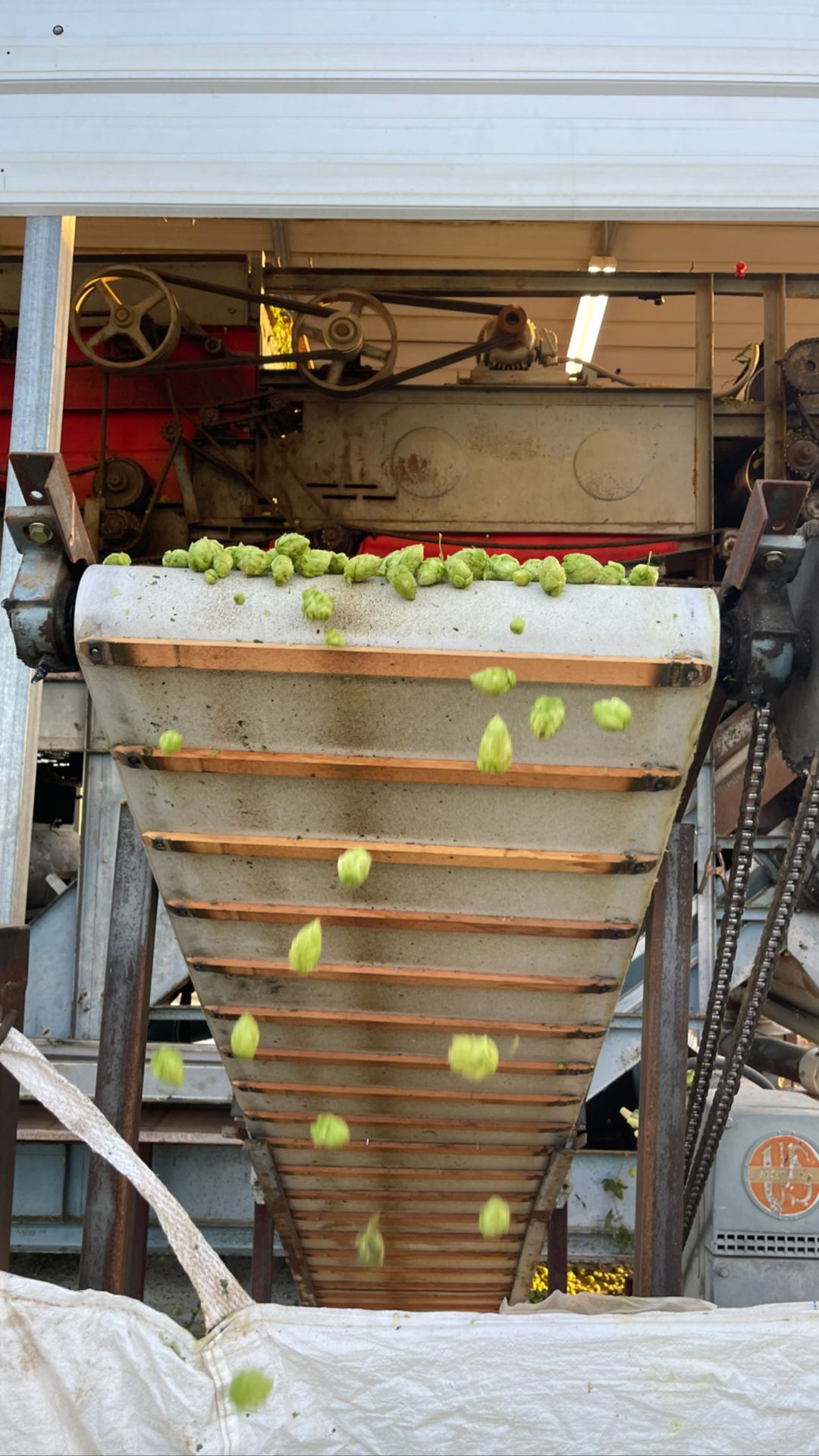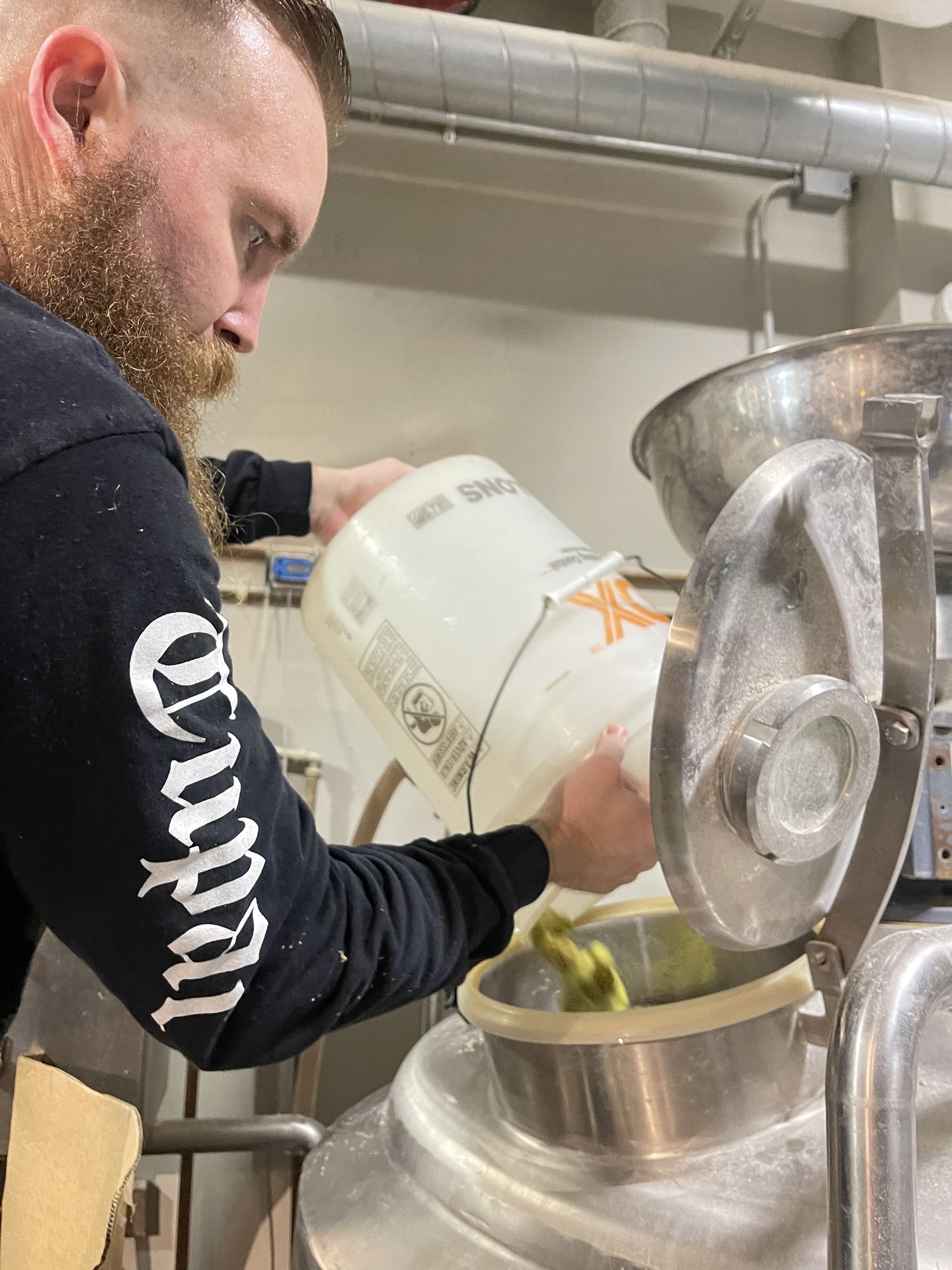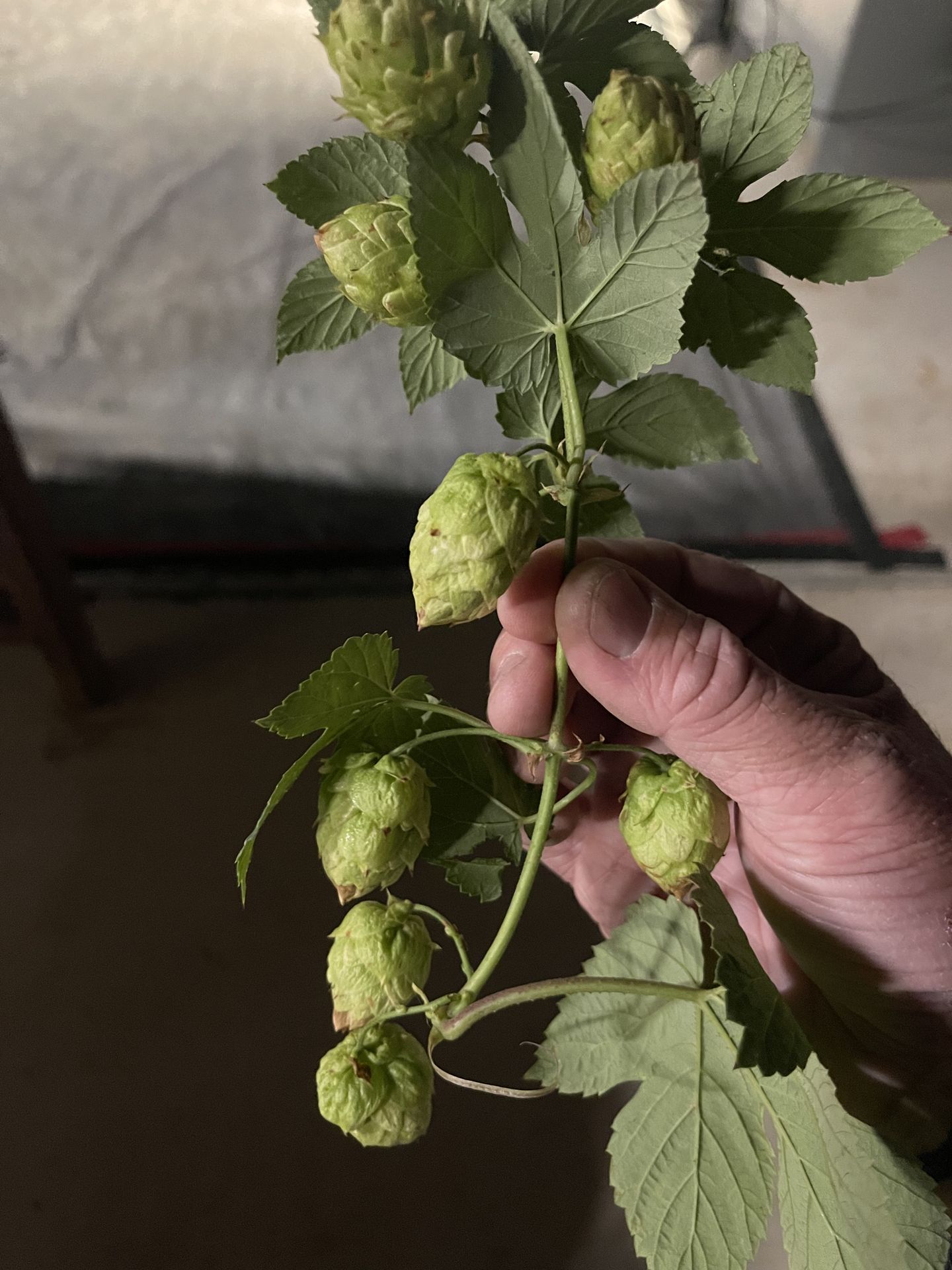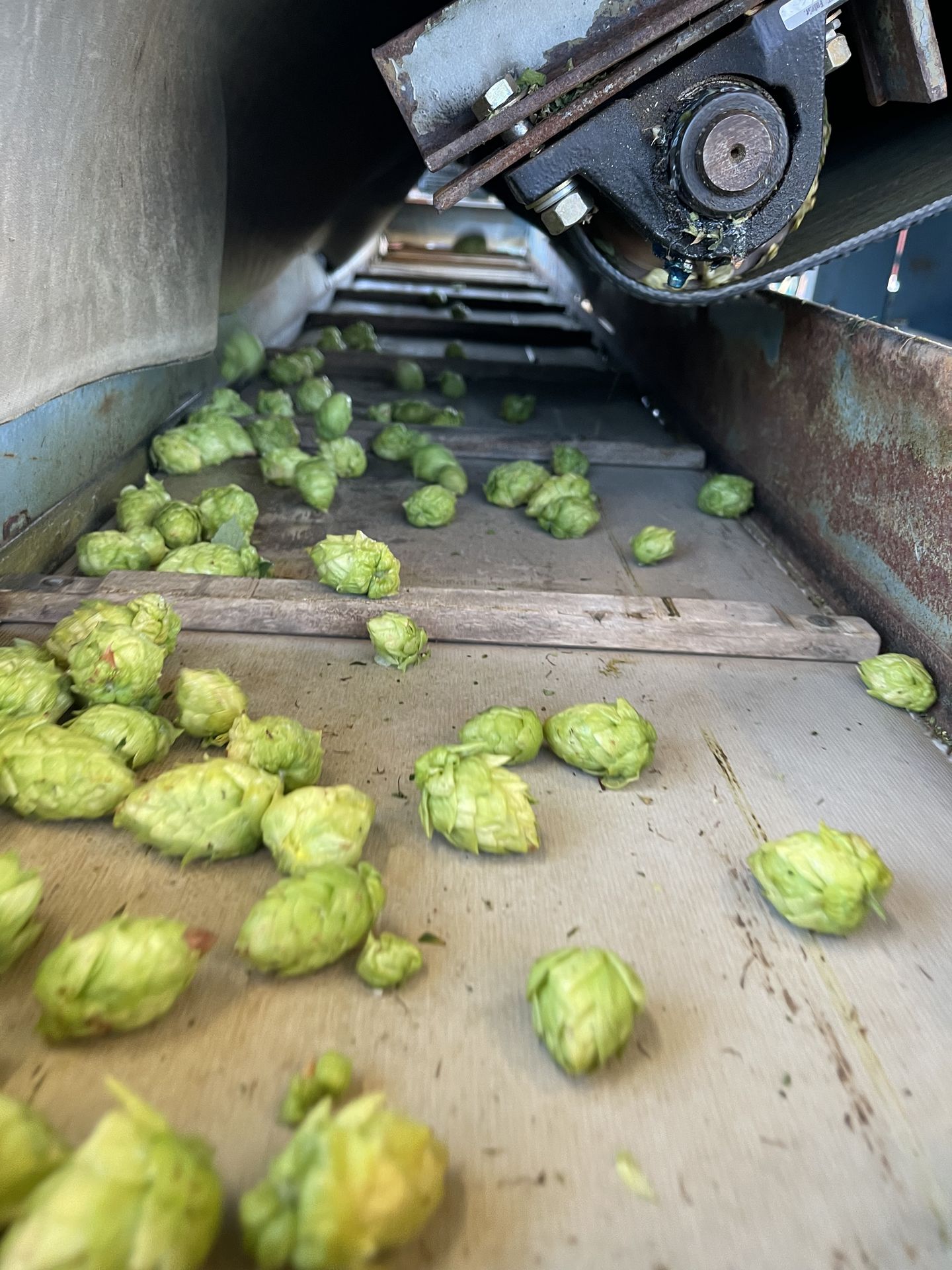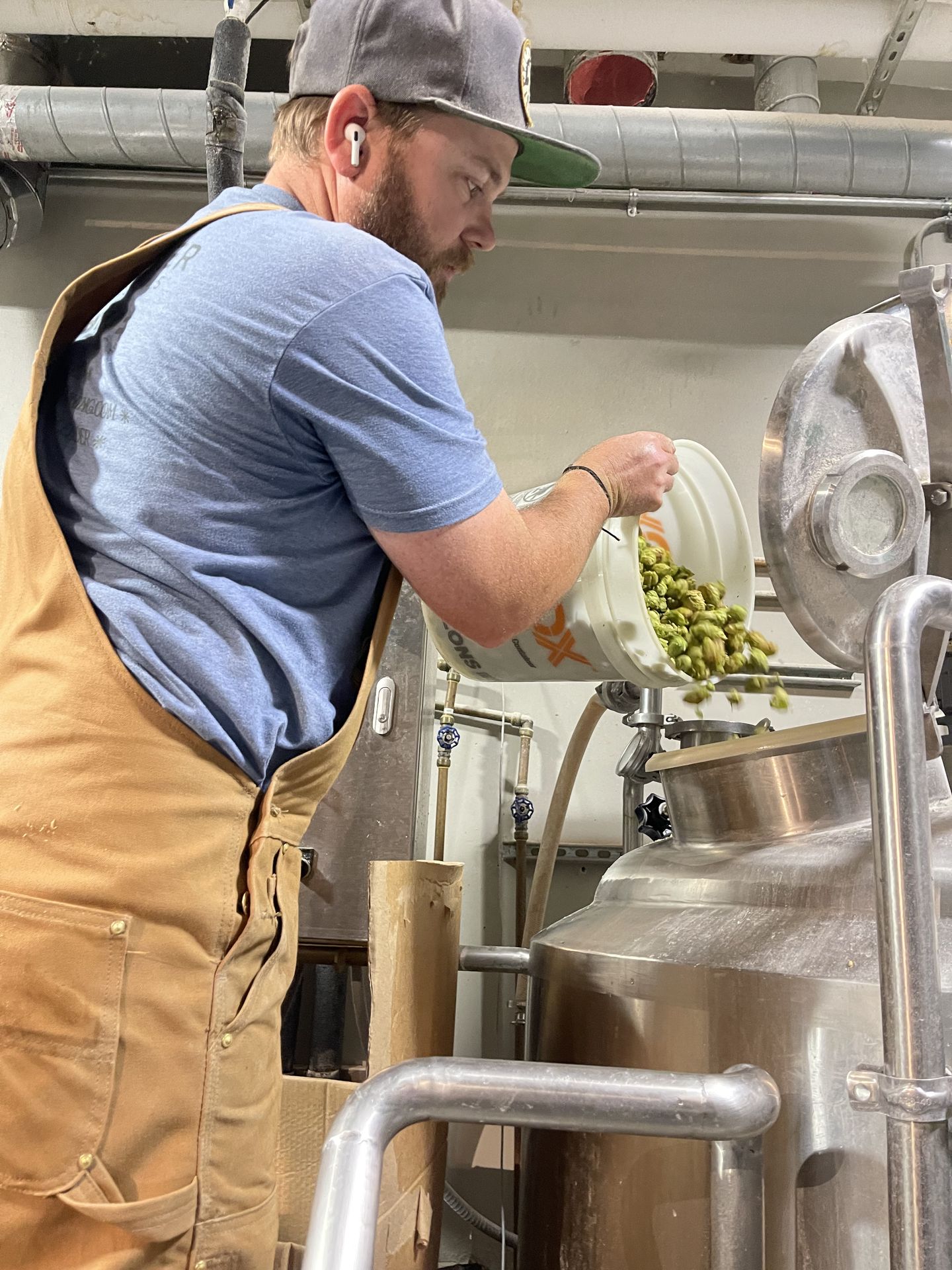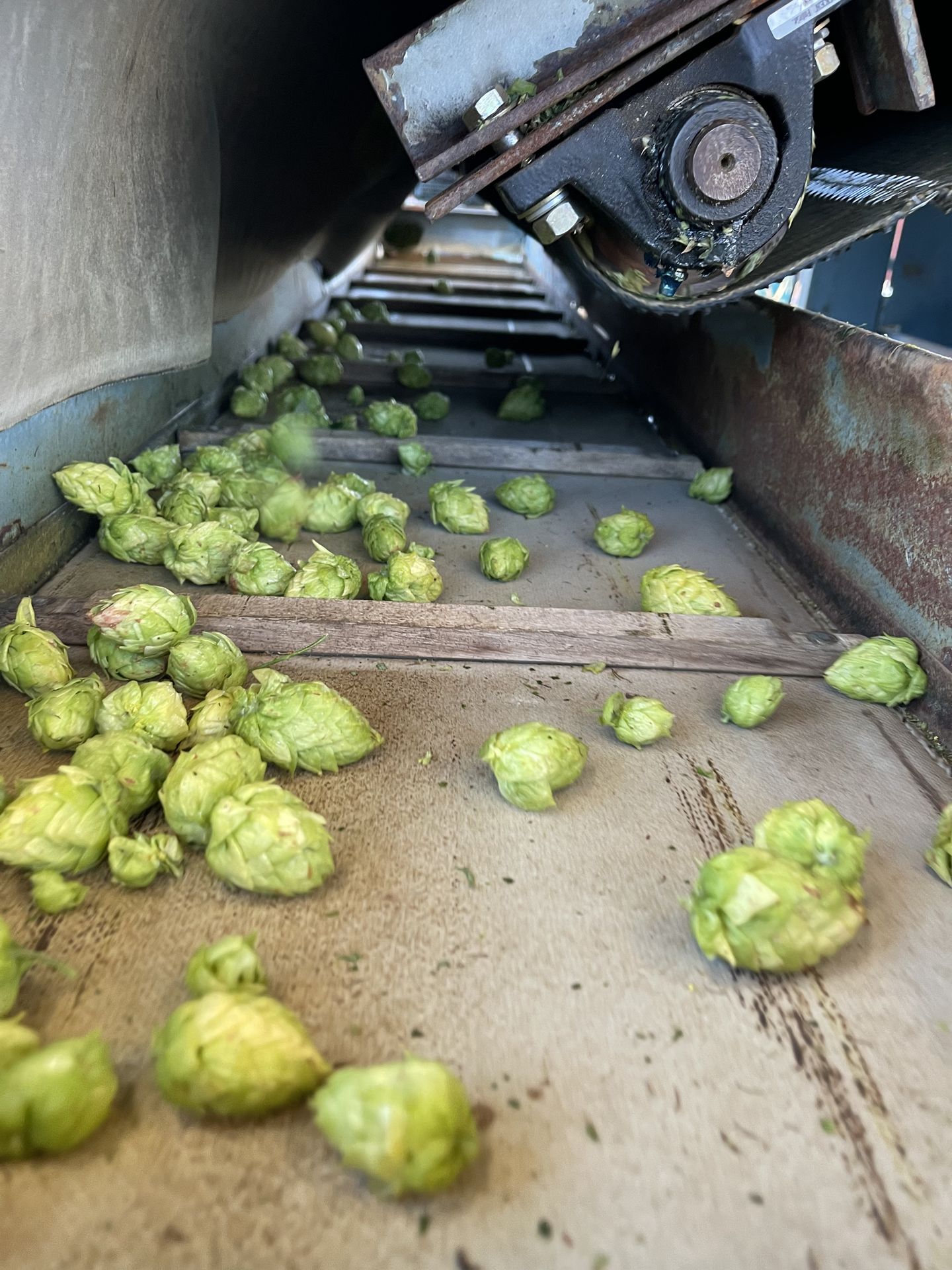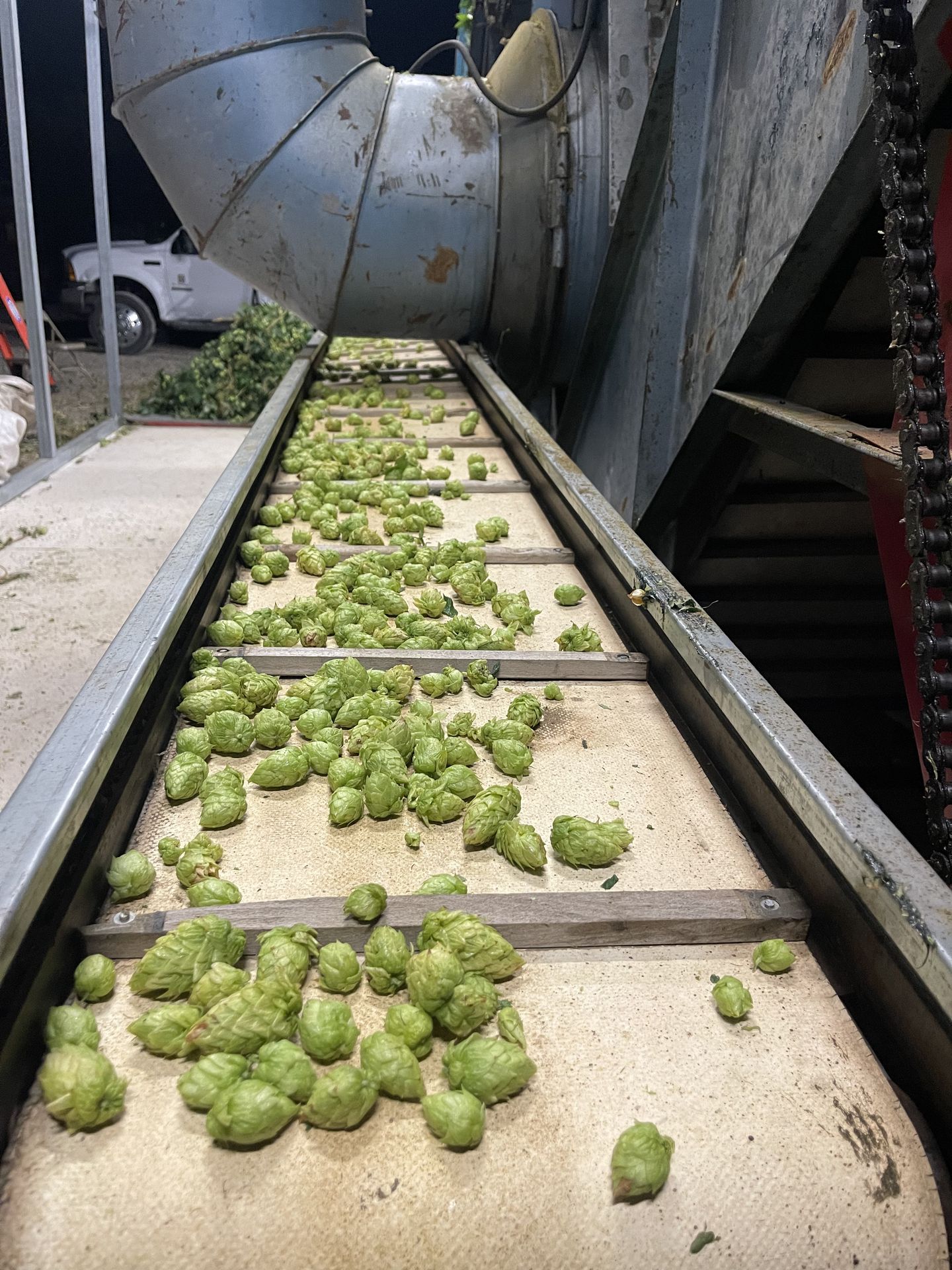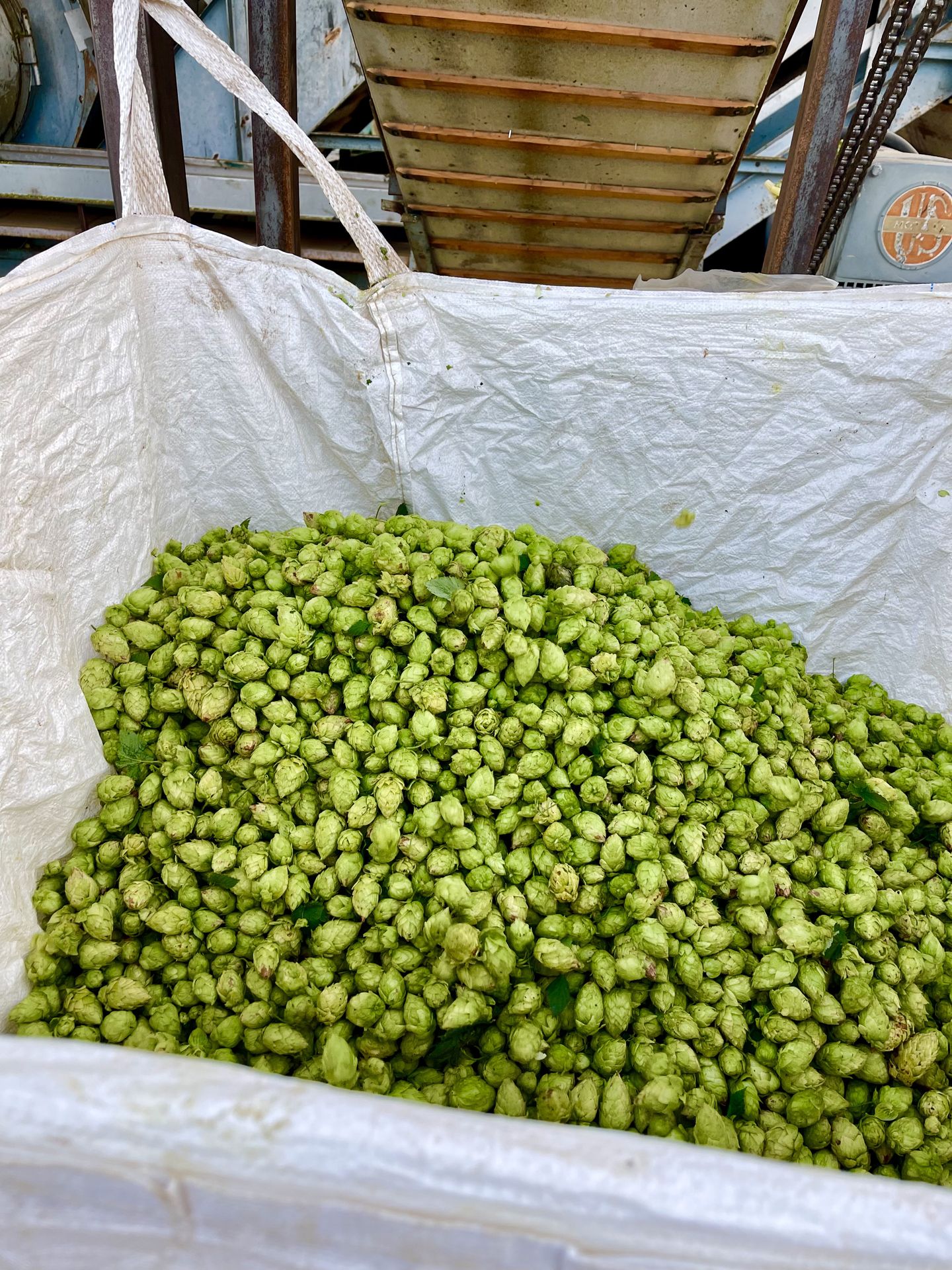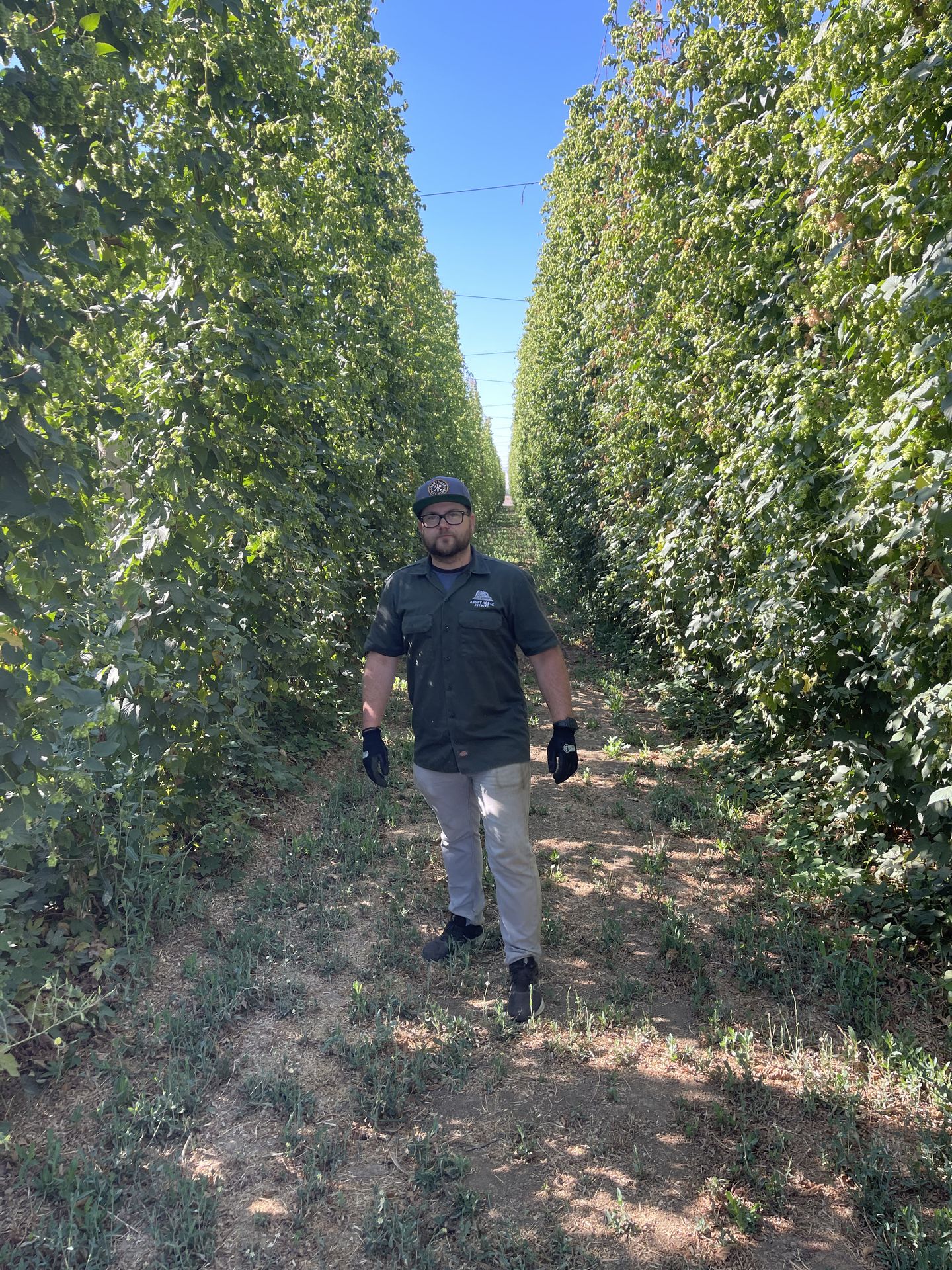This year we had the amazing opportunity to join Thomsen Hop Farm for hop harvest.
The journey began with a six plus hour drive up to the central valley after work. And after 3 hours of sleep, we were up before the sun to start cutting bines on the farm.
To harvest the hops, which are hanging from a 20ft structure having climbed up twine to the top, are first cut at the bottom so they swing into the lane between the plants. We then drive a flat bed truck with the hops going over the top. As they get to the back of the flatbed, they are cut at the top by a machine and fall into the bed. After collecting the bines from a row we head back to the Wolf Harvester. The bines are offloaded from the truck and for the next several hours manually loaded into the harvester by hand. In the harvester the bines are stripped of hop cones and leaves. The cones fall onto conveyor belts and are taken onto bags. The waste bines and leaves are shredded for compost.
After the bags are full for the day, they are taken to driers to drop their moisture content to around 8-12%. Anything more and the hops will start going bad and molding. The dried hops are then loaded into a bailer where they are compressed and stored in cold storage until they are ready to be processed into pellets.
What we were excited about, was to take 55# of hops home right after they come out of the dryer. These went into our first wet hop beer this year.
Hop Harvest 2023
The History of Hops in California
The history of growing hops in California traces back to the mid-1800s. During the California Gold Rush, the demand for beer increased among the many settlers and miners who migrated to the region. This created an opportunity for hop cultivation, as hops are a crucial ingredient in beer production for flavoring and aroma.
The first commercial hop yards in California were established in the early 1850s in the Sierra Nevada foothills. Initially, these hop yards were small and family-owned. However, within a few decades, hop cultivation expanded rapidly due to the ideal climate and fertile soils found in certain regions of the state.
By the late 19th century, hop production in California experienced a significant boom. Counties like Sacramento, El Dorado, and Placer became major hop-growing regions. Sacramento County, in particular, witnessed a surge in hop yards as farmers recognized the potential profitability of the crop.
In the early 20th century, California emerged as one of the leading hop-producing states in the United States. According to the 1910 U.S. Census, California was the third-largest hop-producing state after New York and Wisconsin. Hop yards in California covered thousands of acres and employed a significant workforce.
However, the industry faced several challenges throughout its history. Pests and diseases, such as downy mildew and hop lice, posed major threats to hop plants. In addition, the enactment of Prohibition in 1920 severely impacted hop production. Many hop yards were either abandoned or converted to other agricultural uses during this period.
After the end of Prohibition in 1933, hop farming gradually resumed in California, but on a much smaller scale. The industry faced intense competition from other hop-growing regions, particularly in the Pacific Northwest.
Over time, hop cultivation in California evolved to focus on niche markets and specialty varieties. Craft breweries and the demand for unique, local flavors sparked a resurgence of interest in California-grown hops. Today, craft breweries often seek out locally grown hops to create distinct brews and support their communities.
Although California's hop production remains comparatively smaller than the Pacific Northwest, the state continues to cultivate hops, contributing to the diversity and innovation in the craft beer industry.
Thomsen Hop Farm
Thomsen Hops is revitalizing the California hop industry. Our focus is quality from hop to glass. We are nestled in the most productive agricultural growing region in the world: the central valley of Tracy, California. We are a third generation family farm with deep roots in agriculture that date back to the 1950's. In 2020, we planted 9 hop varieties across 16 acres. We are a one-stop-shop for all things hops from trellis build, hop farming, to processing and cold storage.
